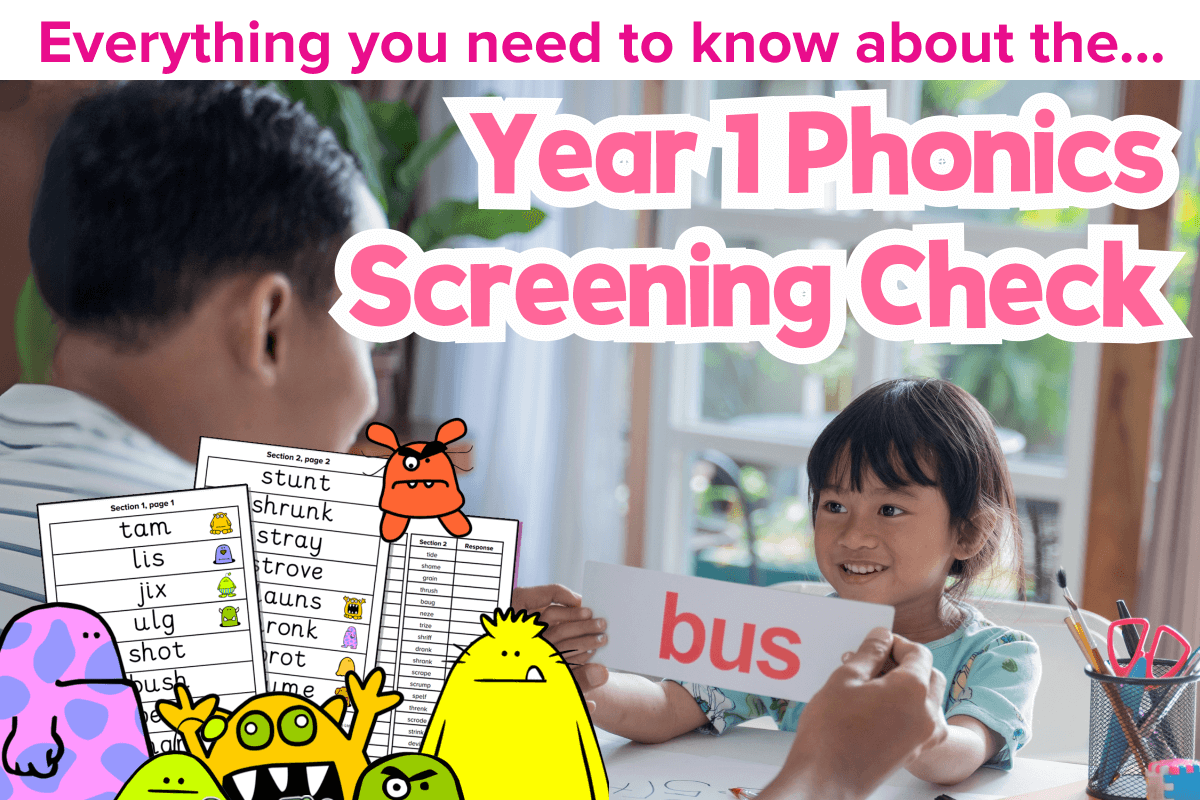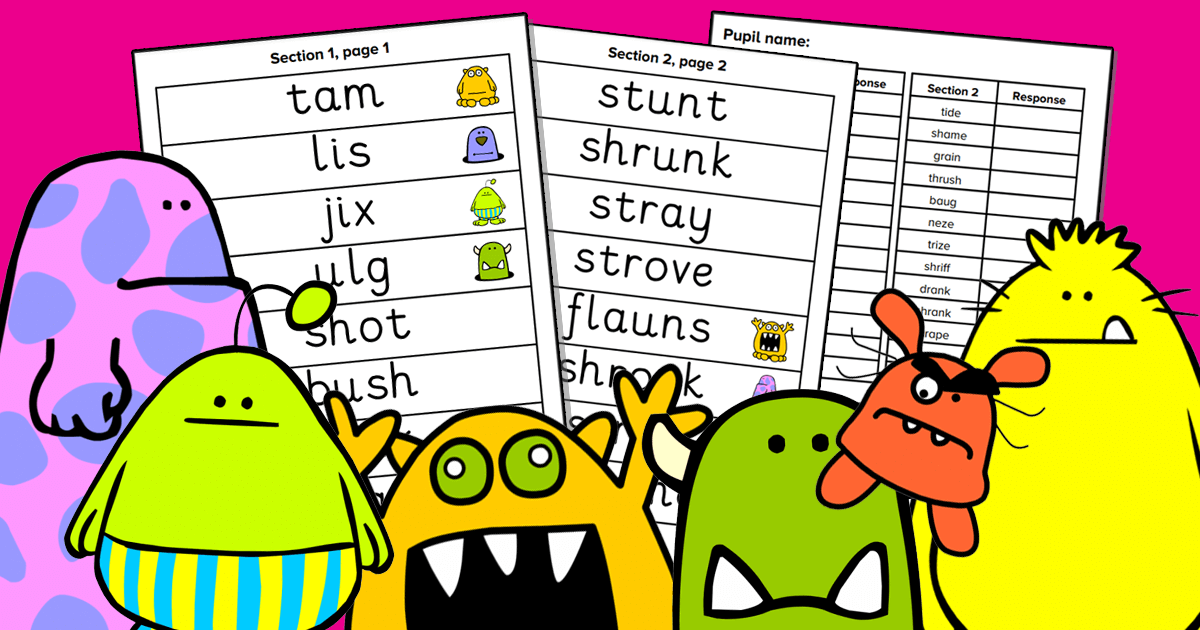Everything you need to know about the Year 1 Phonics Screening Check 2025

If your child is in Year 1, they’ll be taking the Phonics Screening Check in June. This short, friendly assessment helps teachers understand how well children are learning to read using phonics. In this blog, we’ll explain exactly what it is, when it happens, and how you can support your child’s phonics learning at home.
Recap: What is phonics?
Phonics is the method most schools in England use to teach reading. The technique breaks words down into individual sounds such as s, ay, th, and air. Then, once children know these sounds (called phonemes), they can start blending them together to read words independently, even unfamiliar ones!
The English language is full of irregular spellings and exceptions to the rules, phonics gives children a reliable method for tackling most new words.
Want to learn more? Read our blog: How Playing Phonics Games can Improve your Child’s Reading
When is the Year 1 Phonics Screening Check in 2025?
The 2025 Phonics Screening Check will take place during the week beginning Monday 9 June 2025. All children in Year 1 across England will take part.
What happens during the Phonics Screening Check?
The Phonics Screening Check is very informal short activity with a familiar teacher – most children don’t even realise they’re doing a test!
- It’s a one-to-one session with a familiar teacher.
- It usually takes 5 to 10 minutes.
- Your child will be asked to read a list of 40 words – a mix of real and made-up ‘alien’ words.
The test is split into two sections:
- Section 1: Simple words using early phonics sounds.
- Section 2: Trickier words using more complex phonemes.
To make it more fun, nonsense words (also called alien words) are shown with pictures of funny creatures. Children are told they’re reading the name of the alien – and most find this hilarious!
Why are nonsense words included in the phonics screening test?
Nonsense words help teachers check that children are using their phonics knowledge – not just memory – to read new words.
For example, if a child can correctly sound out “trom” or “splid”, it shows they understand how to decode new words using phonics.
To avoid confusion, these pseudo-words always come with alien images to make it clear they’re not real.
What is the Year 1 Phonics Check checking for?
The check is designed to see whether children can:
- Recognise phonemes (letter sounds).
- Blend them to read both real and made-up words.
It’s not a pass-or-fail test, it’s a progress check – it simply helps teachers identify who might benefit from a little extra phonics support.
Early reading skills are closely linked to children’s confidence and progress across all areas of learning, so catching any struggles now can make a real difference.
To understand how your child is doing with phonics and help prepare them for the phonics screening test we have created our new Phonics Screener Resource Maker where you can create custom practice tests and resources.
What is the pass mark for the phonics screening check?
There’s no official ‘pass’ or ‘fail’. But each year, the expected score is usually around 32 out of 40. The actual threshold is confirmed after all children have completed the check.
If your child scores below the threshold:
- Don’t panic – children learn at different speeds.
- They’ll receive extra phonics help in Year 2.
- They’ll have another chance to take the check next summer.
How can I help my child prepare for the Year 1 phonics check?
Most children benefit from a little extra phonics practice at home. Here are some easy, fun and effective ways to support their learning:
1. Play phonics games together
Children learn best through play! Try games like:
- I-spy using phonemes (e.g. “I spy something beginning with sh”).
- Sound matching games.
- Online phonics games on Busy Things.
Busy Things has loads of fun and interactive phonics games to help your child learn to read.
2. Try practice phonics check sheets
Help your child get used to the format by trying actual past phonics screening check papers:
This can help you spot which sounds your child finds tricky and where they might need a bit more support.
3. Use our Phonics Screener Resource Maker

Want to tailor practice to your child’s needs? Our Phonics Screener Resource Maker lets you build custom phonics practice sheets and fun phonics games in just a few clicks. Try our customisable Phonics Screener Resource Maker – perfect for practice at home!
4. Read together every day
Read, read and read some more! Reading a mix of familiar books and new stories helps children grow in confidence and gives them more chances to sound out unknown words.
Tip: If your child is a reluctant reader, check out our blog: 10 ways to encourage a love of reading.
5. Keep it fun and pressure-free
There’s no need to stress about the check. It’s just one small part of your child’s reading journey.
Stay positive and playful. Laugh at the alien names. Celebrate tricky words they conquer. A confident, happy reader is the goal – not a perfect score.
Quick links for parents:
- Play phonics games on Busy Things
- Create practice sheets with the Phonics Screener Resource Maker
- How Playing Phonics Games can Improve your Child’s Reading
- Explore our blog on encouraging a love of reading
We hope this guide has helped you feel more confident about the Year 1 Phonics Screening Check 2025. Supporting your child’s phonics journey now will give them a brilliant start in reading – and set them up for success across the curriculum.
If you use any of our phonics tools or try these tips, we’d love to hear how it goes. Leave a comment or tag us on social media!